Nacism
Otto Rahn: author, poet, Grail seeker, SS officer
In February 2007, Montserrat Rico Góngora published “The Desecrated Abbey”, in which he claimed that Heinrich Himmler, Hitler’s second-in-command and head of the Nazi SS, had made a secret wartime mission to an abbey in Spain, in search of the Holy Grail. Góngora even interviewed Andreu Ripol Noble, a former monk and the only person that spoke German, who was ordered by his superiors to guide Himmler during the visit in 1940. Ripol related that Himmler came to Montserrat inspired by Richard Wagner’s opera “Parsifal”, which mentions that the Holy Grail could be kept in “the marvellous castle of Montsalvat in the Pyrenees” – the mountain range that marks the border between France and Spain.
Otto Rahn and the Quest for the Grail: The Amazing Life of the Real "Indiana Jones" by Nigel Graddon
Editorial Reviews
Product Description
Who was the amazing Otto Rahn? How come if Rahn was such an amazing man has hardly anyone outside specialist pre-WW2 history circles ever heard of him? But is he really such an unknown? The story lines of Raiders of the Lost Ark to Indiana Jones and the Last Crusade mirror Rahn’s incredible adventures in the South of France in the early 1930s.
About the Author
Nigel Graddon lives in South Wales with his wife Val, a Special Needs Teacher, and his son Lewis, a science undergraduate. Nigel has written various articles on these topics for historical societies.
Nazisti e Santo Graal
La coppa dove bevve Gesù nell'Ultima Cena e dove venne raccolto il suo sangue da Giuseppe di Arimatea, al centro delle ricerche di Otto Rahn, singolare SS del Terzo Reich
Il neopaganesimo di Otto Rahn
Il caso di Otto Rahn è ormai noto: è la storia di un giovane romantico, che insegue un sogno. Un giorno entra in contatto con un potere sensibile al mito – il Terzo Reich -, che lo lancia e lo valorizza: ciò che presto lo porta a credersi una specie di nuovo cavaliere templare. Il mito del Graal, quello di una società di puri e di idealisti, di un regno dello spirito, popolava il suo immaginario. Certo del legame storico tra l’eresia dei Catari e la poesia dei trovatori medievali, l’una è l’altra viste come sopravvivenza pagana sotto la scorza del cristianesimo ufficiale, Rahn si convinse che il fulcro di questa cultura si fosse trovato un tempo nel castello provenzale di Montségur, alle pendici dei Pirenei. Proprio il luogo dove, nel 1244, avvenne il finale sterminio dei Catari da parte della Chiesa. In questa zona, intorno al 1929, Rahn svolse ricerce, percorse grotte e camminamenti, rintracciò graffiti e interpretò simboli arcani. Alla fine raccolse il tutto e scrisse il celebre libro Crociata contro il Graal, pubblicato nel 1933. L’incontro fatale con Himmler, anch’egli interessato alla storia delle eresie e all’universo dei simboli pre-cristiani, il pronto arruolamento e la rapida ascesa nelle SS, portarono però Rahn a inciampare nel suo piccolo-grande segreto. Sembra infatti che una mal vissuta omosessualità sia stata all’origine delle sue dimissioni dall’Ordine Nero nel 1938 e infine del suo suicidio, avvenuto per congelamento tra le montagne del Tirolo, nel marzo del 1939. Rahn rimase vittima di un trauma, per esser stato coinvolto in un piccolo scandalo omoerotico? Non resse il clima ideologico delle SS? Venne forse spinto a quel gesto? O ci arrivò da solo, per evitare l’isolamento sociale e magari la persecuzione?
Le Mystère Otto Rahn - Du catharisme au nazisme (Le Graal et Montségur), août 1978, Christian Bernadac
Christian Bernadac, avançant de "coïncidences en coïncidences" propose une solution au "Mystère Otto Rahn". Otto Rahn serait devenu Rudolf Rahn, collaborateur d'Abetz à Paris avant de terminer la guerre Ambassadeur du Reich à Rome, alors que le chef militaire en Italie était ce même Karl Wolff qu'il aurait connu à Ussat-les-Bains avant de le retrouver à l'état-major privé d'Himmler. Oui! Aucun romancier n'aurait pu imaginer un tel destin.
Le "Mystère Otto Rahn" est un livre que ne ressemble à aucun autre; si l'enquête occupe le corps principal de l'ouvrage. Christian Bernadac profite "des jours et des lieux" pour "débarbouiller" le catharisme des mensonges, des invraisemblances, des détournements, des mystifications dont l'ont affublés charlatans, "exploiteurs de lumières" et membres de sociétés ésotériques ou secrètes. Une oeuvre salutaire qu'attendaient les véritables amoureux de Montségur et des "Parfaits".
Mario Baudino: Otto Rahn - Faux cathare et vrai nazi
Toulouse, 1234 : un évêque catholique extorque par la ruse la profession de foi d'une vieille femme cathare sur son lit de mort.
Paris, 1930 : à la Closerie des Lilas, quelques intellectuels fantasment sur les trésors mystérieux censés avoir appartenu aux cathares exterminés au XIIIe siècle, au cours de la croisade lancée contre eux par le pape Innocent III. Pour le plus jeune d'entre eux, Otto Rahn, c'est une révélation. Pendant deux ans, ses recherches vont le conduire vers le château de Montségur qu'il identifie comme " le château fort du Graal décrit dans le récit de Perceval ".
Ses thèses transforment cette fable locale en une mythologie européenne vouée à influencer le sommet du régime nazi. Dans ce passionnant essai biographique qui se lit comme un roman très bien documenté, Mario Baudino fait se rencontrer deux récits : l'histoire médiévale méridionale et celle, pétrie de mysticisme et de romantisme, d'Otto Rahn, porte-drapeau auto proclamé des cathares, devenu ensuite un intime de Himmler.
L'auteur pose un regard neuf sur la sombre légende d'Otto Rahn, dont la mort, en mars 1939, dans le froid glacial des Alpes autrichiennes, reste une énigme encore jamais élucidée.
Kristallschädel von SS-Führer Heinrich Himmler entdeckt?
Sie sind mystisch und geheimnisvoll – die Kristallschädel der indianischen Hochkulturen. Jetzt wurde einer dieser angeblichen „Götterschädel" in Bayern gefunden. Und der befand sich früher vermutlich im Besitz von SS-Führer Heinrich Himmler! 09.03.2011 — 10:20 Uhr, Bild.de
Wie das Magazin „Mysteries“ berichtet, fand der Schweizer Journalist Luc Bürgin den Schädel (12 Kilogramm schwer, 17,5 Zentimeter hoch, 21 Zentimeter tief) auf dem Dachboden seines bayerischen Informanten – versteckt in einem alten Holzkasten. „Eine Spezialanfertigung, die sich wiederum in einem alten, abgeschabten Tornister aus Leder befand.“
Dieser Fund versetzt Historiker in Aufruhr! Denn seit Jahrhunderten geben die geheimnisvollen Totenschädel Rätsel auf.
Otto Rahn im Wikipedia
Otto Wilhelm Rahn (* 18. Februar 1904 in Michelstadt im Odenwald; † 13./14. März 1939 bei Söll (Tirol), Österreich) war ein deutscher Schriftsteller, Mediävist und Ariosoph,[1] der sich mit dem Gralsmythos beschäftigte.
Leben
Schule und Studium
Rahn wurde 1904 in Michelstadt/Odenwald als erstes Kind des Justizamtmanns Karl und Clara Rahn (geb. Hamburger) geboren. Ab 1910 besuchte er das humanistische Gymnasium erst in Bingen, wo er bis zum Beginn des Ersten Weltkriegs lebte. Sein Abitur machte er in Gießen. Dort begeisterte ihn sein Religionslehrer Freiherr von Gall erstmals für die Geschichte der Katharer. 1922 begann Rahn ein Jurastudium in Gießen, das er an der Albert-Ludwigs-Universität Freiburg und der Universität Heidelberg fortsetzte. 1925 bis 1928 unterbrach er sein Jurastudium und betätigte sich als Handelsreisender für verschiedene Verlage.
Н. Гудрик-Кларк Оккультные корни нацизма. Тайные арийские культы и их влияние на нацистскую идеологию.
Глава 14 КАРЛ МАРИЯ ВИЛИГУТ ЛИЧНЫЙ МАГ ГЕНРИХА ГИММЛЕРА
Арманисты, ариософисты и рунические оккультисты, с которыми мы встретились до сих пор, обладали в той иной степени стереотипным мировоззрением. В их доктринах шла речь о возвышенных и сверхчеловеческих предках, чей древний гностический закон нес арийцам мудрость, власть и благополучие, пока не был вытеснен чуждыми и враждебными культурами. Предполагалось, что эти предшественники скрывали свое венценосное знание в таинственных формах (рунах, мифах, традиций) и оно могло быть расшифровано только их духовными наследниками, которыми и являлись современные ариософы. Лист, Ланц фон Либенфельс, Горслебен и другие выдающиеся ученики гностической сокровищницы одушевляли собой жизнь секты, некоторые из их идей или символов могли проникнуть в более широкое социаль ное окружение. Таким образом, эти люди, конечно, влияли на общее мифотворческое настроение нацистской эры, но нельзя сказать, что они прямо определяли пос тупки тех, кто занимал ответственные посты и был наделен реальной политической властью и ответствен ностью.
RELIGION: The Cathars and Otto Rahn
Ed Jajko says:_I would be most interested if Christopher Jones could cite his authorities for the Cathar Christology he presents us. What little I have read suggests that the Cathars had different, not entirely coherent views on Jesus Christ, but that they were not quite in consonance with what Mr. Jones has stated. Reference to a couple of scholarly sources would be much appreciated.
RH: Yes, a few precise sources.
Ed Jajko asked Christopher Jones to give sources for his statements about the Cathars. Christopher replies:
The sources for my comments on the Cathari are all from Cruzada contra el Grial [original German, Kreuzzug gegen dem Gral] by Otto Rahn. This particular translation was done by Fernando Acha and published by Hiperión in Madrid. To the best of my knowledge and a fact that was reconfirmed to me by the current copyright holder in Germany, Rahn's book was never translated into English although Spanish, French and Italian versions exist. The book was first published in 1933.

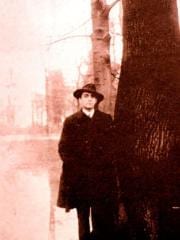
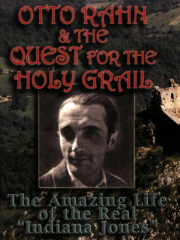
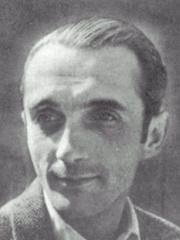
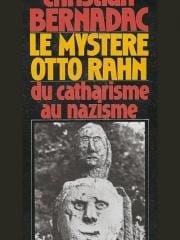
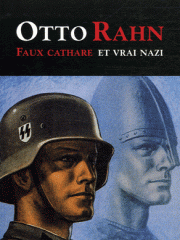



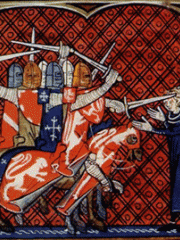
Recent comments
13 years 12 weeks ago
13 years 12 weeks ago
13 years 12 weeks ago
13 years 13 weeks ago
13 years 16 weeks ago
13 years 21 weeks ago